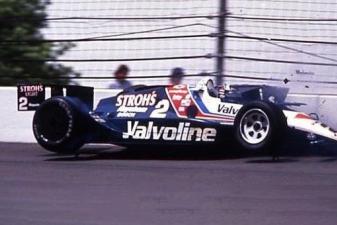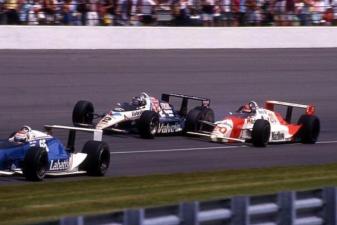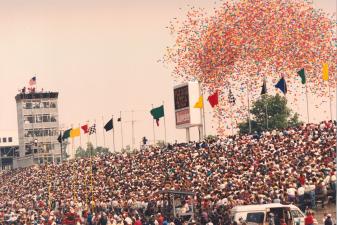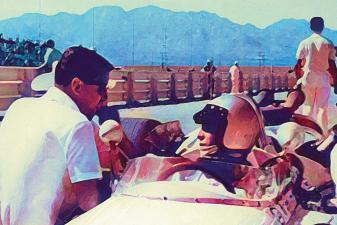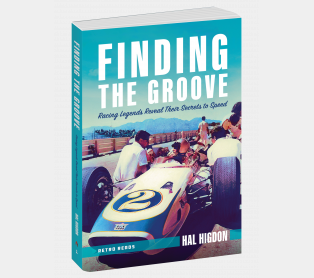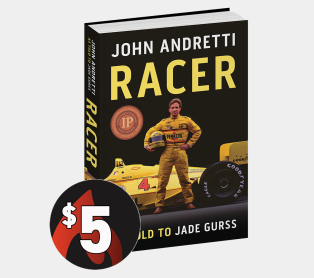Johnny Rutherford: On the Limit


Johnny Rutherford was one of the most exciting drivers in big-time auto racing of the 1970s. In these action-filled pages author Hal Higdon tells how Rutherford grew into a racing great. This is the fascinating true story of how a young man made it to the top of the most dangerous sport of all. In this excerpt from the book, read about the incredible timing needed for each lap of the race track.
Rutherford rushed down the pit road, braking, slowing his car, yet still traveling one hundred miles an hour. Near the entrance to the garage area, he darted left and slammed to a stop. No sooner had his car halted than five members of his crew jumped over the short concrete wall separating the pits from the apron.
Two men wearing fireproof hoods and coats rammed hoses into the side of the car. Fuel flowed through the hoses at several gallons a second. Two other crewmen checked the right side tires, but decided not to change them. Another worked on the engine. A sixth member stood on the other side of the wall to hand Johnny water if he wanted it; he did not. It was a relatively routine pit stop. After only nineteen seconds, Johnny slapped the car back into gear and headed out onto the track.
He accelerated, moving through the gears from first to second to third to fourth as he left the pits and reentered the track on Turn One. He reached top speed coming through Turn Two and moved from the apron on the inside below the banking out onto the main track. He did so just as Billy Vukovich rounded the turn, causing Vuky to back off and move aside. Vukovich shook his fist at Johnny, but kept racing.
Foyt pitted on the next lap, relinquishing his lead to Bobby Unser. Unser stayed in front for two laps, then he came into the pits. All drivers did the same. This caused a wild flurry of activity for several laps, then the refueled cars returned to racing for another several dozen laps before time to refuel again.
Foyt regained the lead when Unser pitted and remained well in front. His car seemed better than Rutherford’s. Johnny’s car, in turn, appeared faster than Bobby Unser’s. At Indianapolis, once the first pit stops are completed, drivers rarely race directly against each other. They become separated by wide gaps on the track. Often, they cannot even see the cars ranked before or behind them on the pylon giving the order of the race.
So they must concentrate all their attention on driving each lap as fast as possible. They must hit each of the four turns, and sections of those turns, on the limit. A moment’s misjudgment—failing to brake at the right time, turning at the wrong point, not getting back on the throttle soon enough, or too soon—can cost them seconds on the stopwatch. In fact, it can cost them more: their lives.


